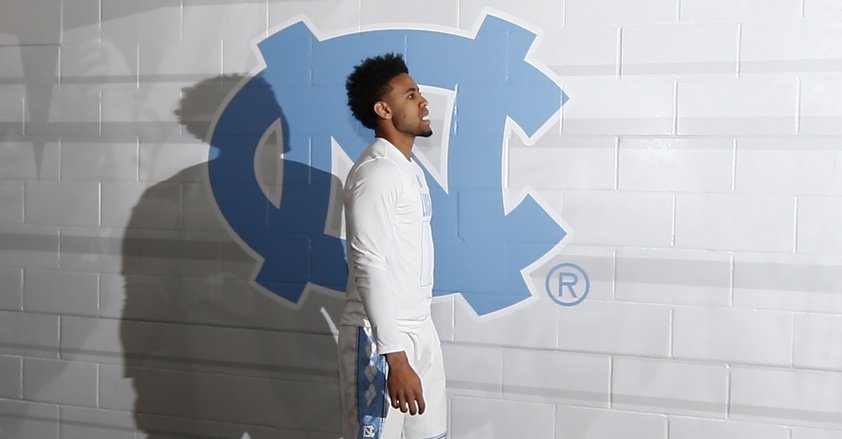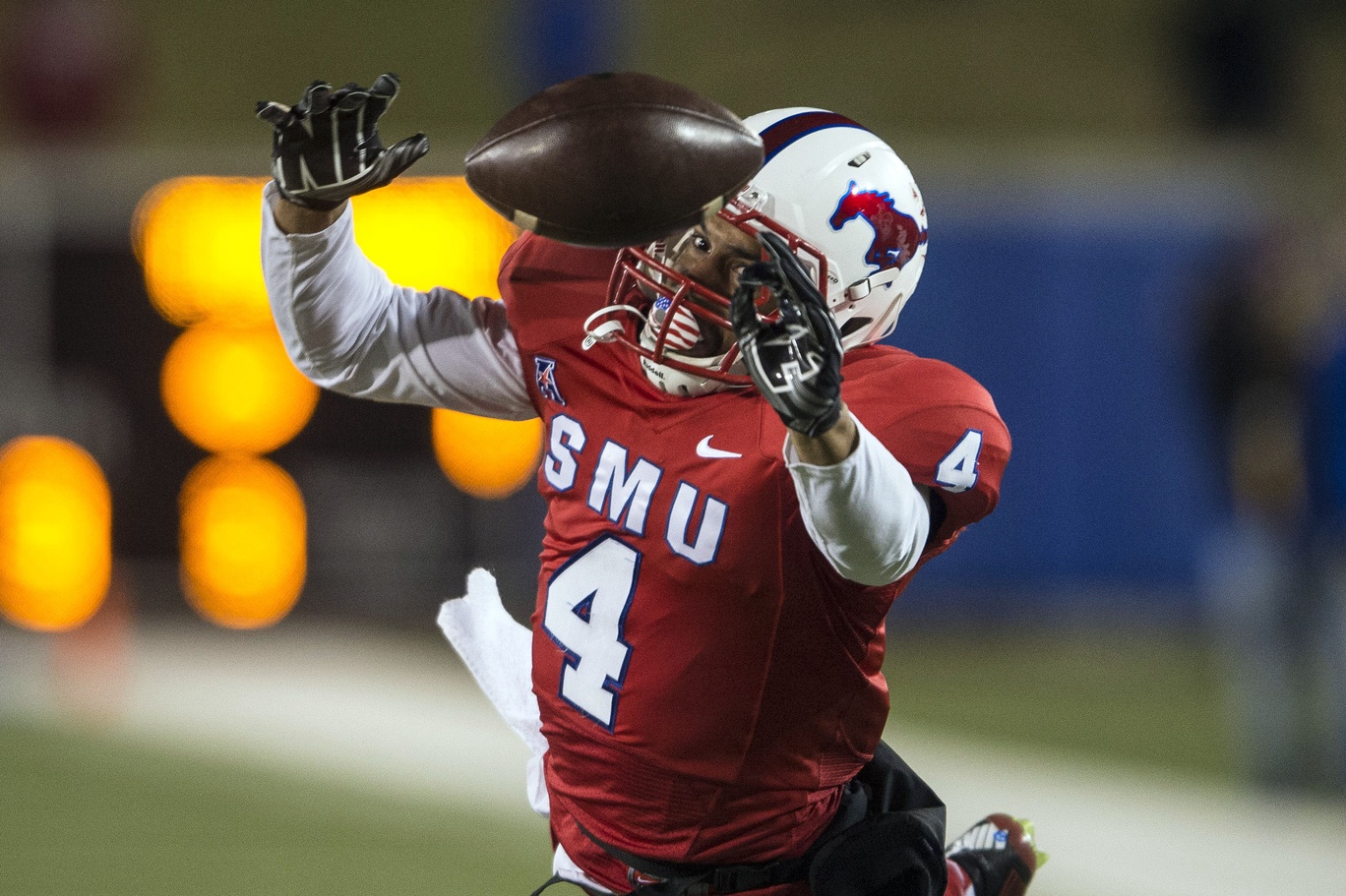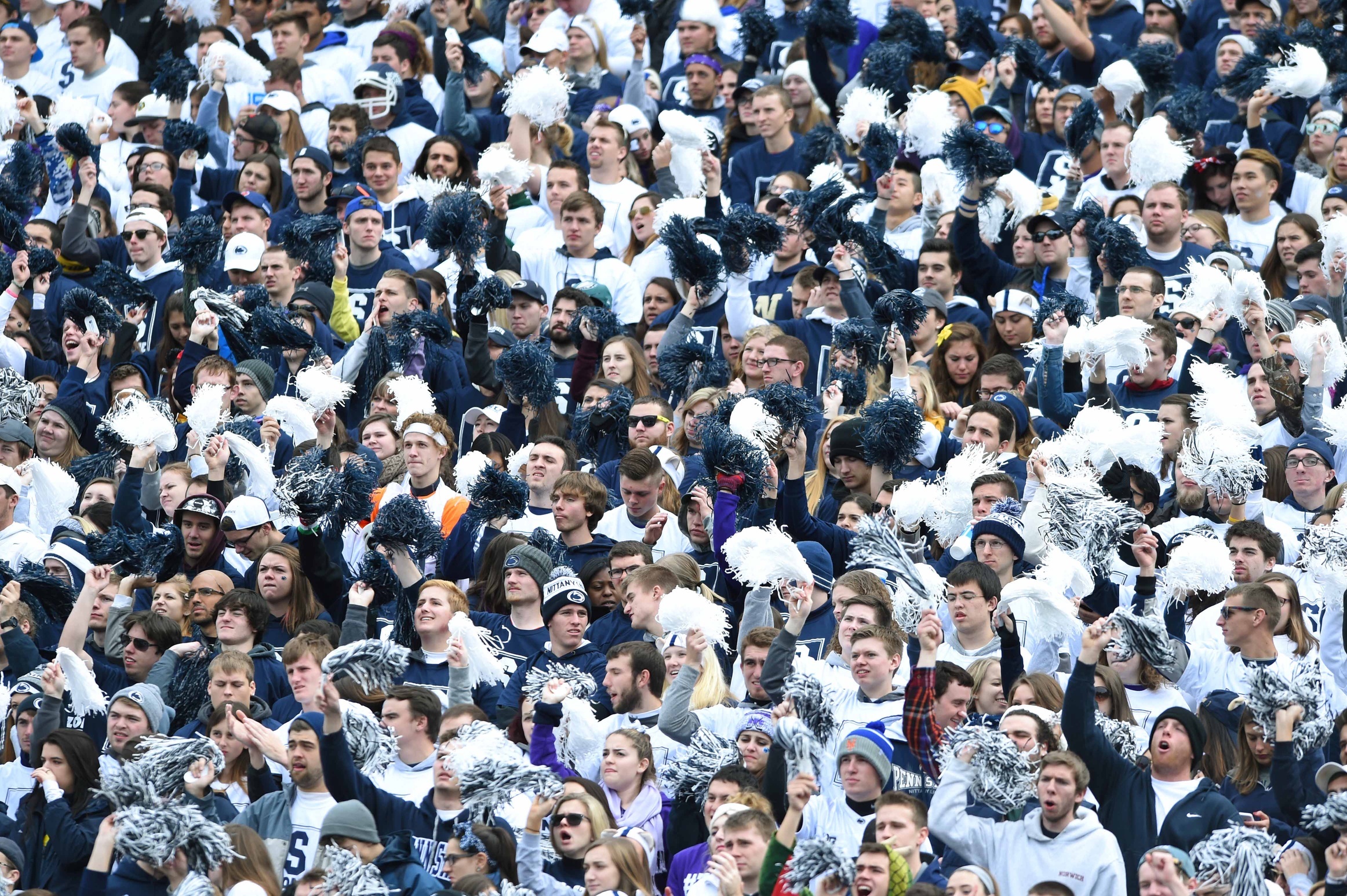Part III: Top 25 scandals in college football history (No. 8-1)
College football has not cornered the market on scandals in sports. But at minimum it’s one of the pillars of the house.
We’ve taken the time to identify the 25 biggest scandals in college football history. Our list is weighted toward the more recent, in part due to more saturated media coverage.
Previously, we revealed Nos. 25 to 16, including “The Nightmare of Steroids” at South Carolina in the 1980s and several memorabilia-for-money investigations involving recent SEC stars, as well as Nos. 15 to 9, including the poisoning of the Toomer’s Corner oaks and Alabama’s recruitment of Albert Means.
RELATED: Top 25 scandals, Part I | Part II
Today we’re revealing the eight biggest scandals in college football history, including several that involve SEC programs.
8. Race in College Football
Trouble with race relations plagues America’s history — slavery during the colonial period, continuing through the Civil War all the way past the Civil Rights Movement.
It has affected college football as well.
Fritz Pollard became the first African-American player to be named an All-American in 1916 when he also led Brown University to a berth in the Rose Bowl. The color line was broken at different times in different parts of the country, but lasted into the 1960s and ’70s across the Southeastern Conference. Nat Northington became the first African-American player in the SEC when he took the field for Kentucky in 1967, and teammate Greg Page would have joined Northington had Page not been injured in a preseason practice, which led to his death a month later. The rest of the SEC followed over the next six years, and by 1972 each team had integrated.
Of course, life was not easy for African-American football players, particularly in the South. While we’ve made great strides, race is still an issue in college football.
In September 2015, following a viral video of Oklahoma’s Sigma Alpha Epsilon fraternity singing a racist song, Edward Aschoff and Adam Rittenberg of ESPN.com took a hard look at the issue of racism in college football. The pair surveyed 99 players anonymously, and interviewed upwards of 40 players representing 15 colleges across the nation. The student athletes discussed what life is like for African-American players on campus and in the communities where they live, study and play.
7. Coaches Behaving Badly, Part 1
Though they devote their lives to coaching and mentoring young men, college football coaches often are far from perfect. Many have gotten themselves fired in the midst of scandals. Here’s just a sampling of high-profile head coaches that have lost their jobs for behaving badly.
Woody Hayes, 1978: Jim Tressel wasn’t the only Ohio State head coach whose tenure ended in disgrace. During the 1978 Orange Bowl, legendary coach Woody Hayes punched a Clemson player that intercepted a Buckeyes pass with 2:30 left in the fourth quarter, which led to his dismissal.
George O’Leary, 2001: Discrepancies on his resume – including false claims of his playing accomplishments and of earning a master’s degree — led Notre Dame to force George O’Leary to resign just five days after he was hired by the Fighting Irish.
Rick Neuheisel, 2002: Already carrying a reputation as a rule-breaker stemming from NCAA violations uncovered when the was the head coach at Colorado, Washington fired coach Rick Neuheisel after he participated in an NCAA Tournament gambling pool.
Mike Price, 2003: After leading Washington State to an unprecedented 20-5 record in his final two years with the program, Alabama hired Mike Price. But he never made it to the fall. Bama fired Price following scandalous reports of a strip club visit and hotel stay in Pensacola, Fla., on the heels of an earlier warning from school administrators for public misconduct in Tuscaloosa bars.
Mike Leach, 2009: Innovative Texas Tech head coach Mike Leach was suspended and later fired in December 2009 following an investigation into the alleged mistreatment of an injured player.
Mike Haywood, 2010: After leading the Miami (Ohio) RedHawks to the 2010 MAC Championship, Pitt hired Mike Haywood. Before coaching a game for the Panthers, Haywood lost his job after a December 2010 arrest on felony domestic violence charges.

Bobby Petrino, 2012: A motorcycle accident eventually led to the firing of Arkansas head coach Bobby Petrino. The Razorbacks fired Petrino for cause after information surfaced that he was riding with a woman with whom he had an affair, that he had given her a cash gift of $20,000 and also reportedly gave her preferential treatment for a job within the Razorbacks football program.
Steve Sarkisian, 2015: USC head coach Steve Sarkisian made news for a series of alcohol-related episodes in 2015, including a druken speech at a banquet, reports that he missed a team practice and was intoxicated at a pre-practice staff meeting. Sarkisian took a leave of absence on Oct. 11, 2015, and was fired by athletic director Pat Haden the following day.
6. Coaches Behaving Badly, Part 2
There are some coaches that took things further and landed their programs in hot water with the NCAA for their wrongdoings. Among the most notable:
Charley Pell, 1984: Death penalty rumors followed the Florida Gators football program after an NCAA investigation revealed as many as 107 infractions within the program, 59 of them directly connected to Pell, including improper benefits for players. The program was not allowed to participate in the Sugar Bowl following the 1984 season despite winning the SEC title (which was later vacated), and was also banned from bowls and TV the following two years, and lost 20 scholarships in a three-year period.
Barry Switzer, 1989: Three-time national champion head coach Barry Switzer finally ran out of chances with the Oklahoma Sooners in 1989 following a series of scandals, highlighted by the arrest of a player for soliciting cocaine, rape charges filed against three players and a shooting at an athletic dorm, as well as 18 NCAA violations that led to probation for the program. The Sooners also received a two-year bowl and TV ban, recruiting restrictions, and disassociation with a booster, among other penalties.

Pat Dye, 1992: While attempting to expose racial issues that African-American players faced at the school, former Auburn football player Eric Ramsey recorded conversations that also exposed improper payments to Tigers players. That eventually led to Dye being forced out in 1992, as well as a two-year bowl ban and a TV ban for the program the following season.
Don James, 1992: Washington was slapped with the “lack of institutional control” tag following an NCAA investigation into improper benefits given to Huskies players, including $50,000 in loans to quarterback Billy Joe Hobart. Don James resigned as head coach following the sanctions, which resulted in a two-year bowl ban and a one-year TV ban.
Billy Brewer, 1994: In 1993, an NCAA investigated of the Ole Miss football program uncovered a series of recruiting violations including impermissible benefits that had occurred with knowledge of members of the Rebels athletic department. Brewer was fired in 1994 as a result, though he sued the university for wrongful termination.
Hal Mumme, 2001: The driving force behind the Air Raid offense, Kentucky head coach Hal Mumme resigned following an NCAA investigation that uncovered more than 30 recruiting violations, including paying recruits. The Wildcats received a one-year bowl ban and former assistant coach Claude Bassett received an eight-year show-cause penalty for his role.
Chip Kelly, 2013: Though he wasn’t fired and had already moved on to the NFL, former Oregon head coach Chip Kelly received an 18-month show-cause penalty after an NCAA investigation into the Ducks football program, and specifically its use of scouting services for recruiting. Oregon lost scholarships and was placed on probation for three years.
5. “Scam Newton”

Cam Newton completed one of the greatest individual seasons in college football history in 2010 when he quarterbacked the Auburn Tigers to the BCS National Championship, while also winning the Heisman Trophy in dominant fashion.
Of course, much of that season involved an eligibility scandal connected to a pay-for-play scheme concocted by Newton’s father, Cecil Newton, in which he was believed to be seeking between $120,000 and $180,000 from Mississippi State boosters for Newton to play for the Bulldogs instead of Auburn when transferring from Blinn Junior College.
Jeremy Henderson, the co-host of the Rich and Jeremy in the Morning radio show and editor of The War Eagle Reader, remembers the controversy surrounding Newton as apocalyptic.
“At the time, the Cam thing seemed to be possibly the end all be all of college scandals,” Henderson said.
“With the context and all the things in play – obviously one of the greatest players in history, he’s the Heisman front-runner. Is he going to be able to keep playing or not? All the ins and outs with the Mississippi State stuff, the secret recordings and the bag man, the father, the church … it just had all these classic elements at such a high level that it seemed huge at the time.”
Auburn fans had already suffered through a perceived injustice from the 2004 season, when the Tigers completed an undefeated, SEC Championship season only to be shut out of an opportunity to play for the BCS National Championship. There was certainly a “here we go again” feeling on The Plains.
The scandal played out in real time as the NCAA quickly determined that the quarterback had no knowledge of his father’s plans, keeping him eligible to play.
“It made it that much sweeter,” Henderson says, describing Auburn fans’ feelings about the championship season and the team overcoming the Newton saga. “At the same time, it added so much drama and definitely enhanced the sense of magic that the season had. It was like one extra hurdle.”
An NCAA investigation into Newton’s recruitment concluded in 2011, and though the governing body found no major violations by the Tigers, the entire episode is still one of the most talked-about scandals in college football history.
4. Academic Scandals

Academic scandals have long been a part of college football history. Thirty-seven Army football players were expelled in 1951 for cheating on exams, among the earliest and most famous such scandals.
Miami thought Butch Davis was the disciplinarian it needed to get through the NCAA sanctions of the early ’90s. But he was caught in the middle of an academic misconduct scandal (as well as allegations of improper benefits to players) as the head coach at the University of North Carolina, eventually leading to his dismissal in 2011.
According to allegations from former Tar Heels, football players were urged to consider majors such as African-American studies and exercise sport science, which were believed to be among the easiest at the school. Fraudulent classes existed for student-athletes to receive easy grades for little to no actual work.
A four-year NCAA investigation ensued at UNC, and the Tar Heels vacated the 2008 and 2009 seasons for playing three ineligible players.
The UNC scandal followed quickly behind a similar issue that befell fellow ACC rival Florida State, which resulted in the Seminoles suspending 27 players for their 2007 Bowl game and vacating the 2006 and 2007 seasons and receiving four years probation.
An athletics-wide issue that uncovered fraud by academic advisors and tutors, at least 10 sports programs at the university received some sort of sanction by the NCAA. Many of the violations involved a music course, and lasted roughly a decade before the wrongdoing was uncovered.
3. SMU Gets the Death Penalty

The SMU program once was one of the proudest in the country. The Mustangs won the 1935 national championship, star running back Doak Walker won the Heisman Trophy in 1949, and the Southwest Conference crowned 10 SMU teams as champions. However, SMU football came crashing down in 1987 as the first (and to date the only) major college football program to be put to death.
With the Mustangs already on probation for the fifth time in less than two decades, serving a two-year bowl ban and a one-season TV ban, SMU boosters continued to thumb their noses at the NCAA by providing thousands of dollars to players and recruits through a slush fund. Investigations by Dallas media and the NCAA revealed members of the athletic department, including the athletic director and head coach knew about the payments and other improper benefits given to players, including at least one case of a rent-free apartment provided by a booster. The impropriety even went as far the governor’s office.
In addition to the cancellation of the 1987 season, SMU lost 55 scholarships, received heavy recruiting restrictions, was not allowed to play home games in 1988 (thought the ’88 season was also eventually cancelled because of a lack of players in the program) and had its television ban extended through 1989.
SMU received the most extreme sanctions ever handed down by the NCAA, and as a result, the Mustangs struggled to compete. From 1989-2008, SMU posted one winning season (a 6-5 mark in 1997), and didn’t make an appearance in a bowl game until 2009. When the Southwest Conference disbanded in 1995, the school found itself relegated to the non-major Western Athletic Conference. The Mustangs have since bounced around to Conference USA and finally to their current home in the American Athletic Conference.
2. The Sexual Assault Epidemic
One of the biggest ongoing issues in college football today – and on college campuses in general – is a growing list of sexual assault cases. In 2013, Jessica Luther compiled a list that gives details and links for nearly 30 separate rape cases involving Division I football programs dating back to 1974 – though the actual number is surely much higher.
In recent years, high-profile rape cases have occurred at Florida State University – including allegations against FSU quarterback Jameis Winston and at Baylor. In the SEC, both Vanderbilt (2013) and Tennessee (2015) have had football players accused of rape in the last three years.
1. Jerry Sandusky Sexual Abuse Scandal

Penn State was yet another school that survived talk of the death penalty as a result of arguably the most disturbing scandal in college football history – shocking the revelations that tarnished the legacy of Joe Paterno.
In early November 2011, news broke that former Penn State defensive coordinator Jerry Sandusky had been the subject of a two-year grand jury investigation focused on allegations of sexual abuse against 10 boys over a 15-year period. Sandusky — who retired from coaching in 1999 — was originally charged with 52 counts of sexual abuse that occurred from 1994 to 2009. Many of the counts stemmed from relationships Sandusky made with the victims through his charity, The Second Mile. Four charges were dropped prior to trial, and Sandusky was found guilty on 45 of 48 counts in court and sentenced to 30 to 60 years in prison.
The scandal, and how it was handled internally by school administrators, led to the termination of Paterno and athletic director Tim Curley, as well as the resignation of Penn State president Graham Spanier. The school removed the statue of Paterno — who died from cancer Jan. 22, 2012 — from the grounds of Beaver Stadium in July 2012.
The NCAA severely punished the Nittany Lions: Five years of probation, a four-year postseason ban and 112 vacated victories, slashing away Paterno’s Division I-record 409 career wins. Penn State paid a $60 million fine, and the football team lost of 40 scholarships in a five-year period, among other penalties from both the NCAA and the Big Ten Conference.
Those sanctions were reduced over time, including the restoration of Paterno’s wins in January 2015. However, the Sandusky child sexual abuse scandal likely will be remembered as the most disturbing in college football history.

